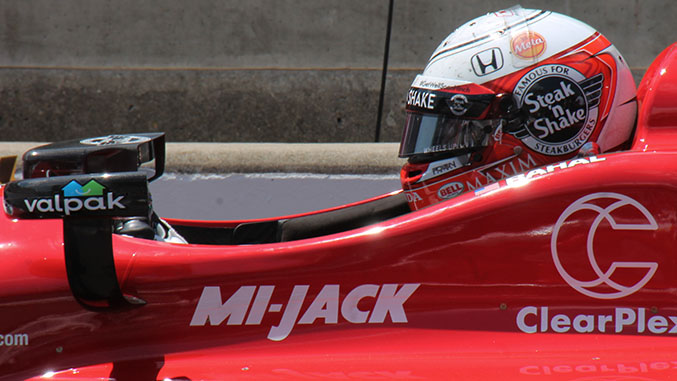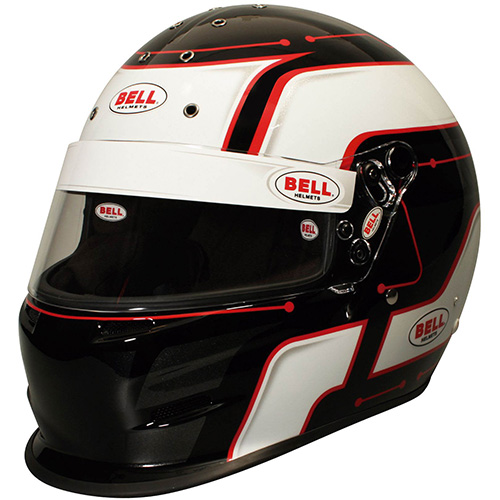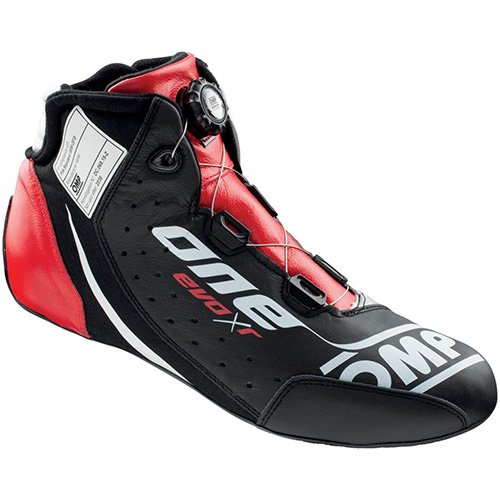I love watching a driver who’s driving with confidence. The difference between one with confidence, and one without, is obvious – you see it in the passing maneuvers, the way a corner is attacked, and even by the way the driver holds his head in the cockpit. In the past few years, we’ve seen demonstrations of confidence in F1 by Schumacher, then Vettel, and now Hamilton. In NASCAR, Kyle Busch shows it (and sometimes too much). In Indy cars, this year, Graham Rahal is the one who has been dragging his car around the track with his confidence. So I reached out to someone who knows Rahal well. Mike Zimicki is well-qualified to comment on what’s made Rahal faster and win more races this year than in the past. Why? Well, because Mike coached Graham for a number of years, and helped make him what he is today. -Ross
|
I have worked with Graham Rahal on and off since he started racing, so I have had many people ask what changed to make his performance better this year than in the past few.
There are many components that go into a driver having a successful season, and most of them are shared, whether you are a top level pro or a HPDE level driver that gets to a few events a year. To detail and explore the subtleties would take a book, so I will try and touch on what, in my experience, are some of the major factors.
|
|
|
Team:
Let’s start by saying that we all are human; I know that the kid who first walked into kindergarten not knowing what was to come, and feeling a bit uncomfortable, is still in me. We all want to be in a place that is comfortable to us, where we feel welcome, supported, and that we know. A home.
Read about performance and the brain or just reflect on your own experiences in life and it is apparent that by being in an environment that allows you to be relaxed and confident – comfortable – then you are more able to focus on what matters and not have your thought process cluttered by distractions.
Trust:
One of the keys to building that kind of environment is trust. For the pro, this is everything from trust in the engineer and what changes he has decided to make to the car, to the mechanics making those adjustments properly, to the PR person not booking a disruptive interview just before a crucial session. Truly, it is everyone working as a team.
If you are Graham or another pro moving to a new team, this process can take years to get the components in place that will help you be your best.
Personality:
Teams have personalities and in a perfect world, you as a driver would be matched to a group that fits yours. It is often no surprise that when drivers switch teams, they bring “their” engineer with them. They then have someone who is familiar with the way they work, the feel/balance they like in the car, and who can act as an advocate for them inside the team and work to get the environment right for them.
Some crucial questions can be asked about a driver’s personality and how theirs might fit with a team: Does the driver respond to a team that is driven by numbers, and an endless stream of analysis of data and sim work, with every small detail being discussed and examined? Or are they more responsive to that data and information being distilled down to more condensed points and then presented to them? Matching the team and driver personalities make a big difference.
Respect:
Respect should be interwoven with trust and that really goes to the core of what is needed.
To me, personally, respect means that you trust that everyone is giving their best, mistakes get made but that when they do there is no finger-pointing, but rather an effort by all to minimize, learn, and move forward.
“Open, honest communication” is a phrase that an engineer friend who is a legend in the sport likes to use. The expanded version is that if the respect is there, then you can have open communication that is not taken as pointing fingers, but rather as a effort to make things more successful. The goal is for the team to be successful.
Packaging:
Now let’s talk reality. In trying to formulate how this all works in real life, I keep coming back to the idea that a team is like being in a good marriage (or these days, a partnership or civil union…). In a good partnership/team, you know the others have your back, mistakes will get made but also forgiven. Mistakes will not be allowed to drag you down, but instead used as a way to strengthen the partnership moving forward.
Workloads will get shared and when someone gets overwhelmed, the other will step in to help out without resentment. You will understand each other’s strengths and weaknesses and work to fill those gaps for each other – the scenario you hope for is that your skills will complement each other and your personal ego will be set aside for the greater good.
For the club racer (or someone moving up the ranks), all the same goals are in place, but perhaps framed a bit differently, depending on the level.
An HPDE driver has a smaller team (maybe just you), but you should still give yourself the chance to succeed. Success might be defined by your level of fun! Having your car prepped and being organized so you have what you might need (simple things like having a schedule printed out and knowing the layout of the paddock), can lower your stress. If there is someone working on your car either before or at the event, have you talked to them about what your expectations are? That new suspension setup might be what the fast guy is running, but is it right for you?
If you are a racer moving up the ranks, team choice is often driven by a team’s past success; what that tells you is the team that season had success. Are the same staff in place, does the team approach match yours, will you get along with them or feel like an outsider? Does the team (this includes your personal support system, as well as the hired personnel), understand where you are in your development and are their personal expectations in line with yours? Managing expectations and understanding that everyone progresses differently is a key component to a lower stress season. You might be more comfortable with the team that finished third in the championship and develop more there than with the first place team. Some drivers respond well to a teammate who is an adversary on and off the track, while others will do better with a teammate who functions as a teammate off the track and an opponent on.
The truth is that you will rarely have all the components in place, and developing skills to work around those gaps is crucial if you want to be a successful pro. You don’t need to be good friends with your engineer or want to hang out with them, but if there is mutual respect and a good working honesty, then you have a chance of it being a good partnership.
So what is different with Graham this year? No one thing but rather after three years at the team, the right blend of individuals and other factors have come together to make it all work very well. If anything, it is a great example of how small things add up. If you look at the percentage he was off by last year, it was often around one percent (welcome to competitive professional racing!). Graham knew how to drive last year and the results showed it at times, but finding the blend to have consistency is a key. The fact that he is the only Honda up front in points shows me that you don’t just need the right car to do well, you need a team that is functioning with trust and respect and that understands what the ultimate goal is – to win.
– Mike Zimicki




















